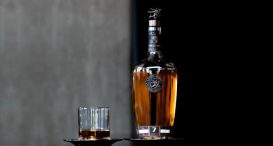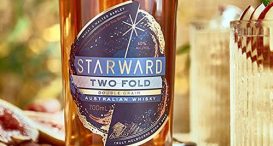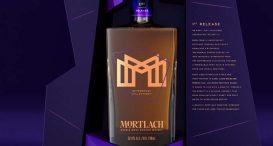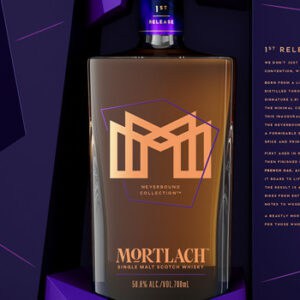The Ultimate Whisky Guide for Beginners
Ask anybody to name an alcoholic beverage synonymous with Scotland, and 9 times out of 10 they will of course reply with… Buckfast. Only kidding, of course it’s whisky, it had to be whisky.
Whisky is an alcoholic beverage enjoyed all over the globe, yet it is always Scotland that people think of when they think of this fantastic tipple. When you consider the fact that there are more than 140 operational Scotch Whisky distilleries across the country, that’s really not surprising.
Despite whisky, or whiskey (whisky with no ‘E’ refers to whisky made in Scotland, Canada, or Japan) being popular all over the globe, it can be a tricky spirit to get into as a newbie. A lot of people new to the world of whisky initially struggle to get the most from their whisky drinking experience. This isn’t necessarily because they dislike the taste, but rather, it’s because they aren’t drinking it correctly.
Whisky drinking is an art, and to help you discover exactly what you’ve been missing for all these years, we’ve gone ahead and have compiled this handy guide.
So, grab your favourite bottle, put your comfiest slippers on, and check out our ultimate whisky guide for beginners.
The History of Scotch Whisky
If you’re more of an Irish whiskey or Bourbon fan, don’t worry, we’ll be looking at those tipples in future guides. For today however, we’re staying in Bonnie Scotland and will be going back in time to discover how we were graced with the ‘water of life’.
The word ‘whisky’ is originally derived from the Gaelic word ‘Usquebaugh’ which literally means ‘water of life’.
In an ideal world, we’d be able to go back through the record books and tell you exactly when the first batch of whisky was distilled, and by whom, but sadly we can’t. The truth is that we don’t know exactly when whisky was first distilled, or who made it.
What we can tell you however, is that there is a lot of evidence to suggest that Christian missionary monks likely brought the art of distilling to the Highlands of Scotland. The earliest written records of alcohol distilling in Europe can be traced back to the 12th century. However, the earliest written records of distilling in Scotland didn’t appear until the 15th century.
Early forms of whisky was, well, not the nicest of stuff. Monks would use it primarily for treating all manner of wounds, illnesses, and ailments. Once Henry VIII came along however, and turfed out all of the monks thanks to his dissolution of the monasteries, whisky distilling was forced to change.
It is likely that Scottish farmers took up distilling thanks to their surplus supplies of barley and other grains. The process was refined as the years went by, and years later, whisky distilling was big business. It was known as aquavitae (water of life).
Duty on Scotch Whisky
Once the whisky distilling industry was seen to be so profitable, as is always the case with our governments, they began looking for ways in which they could get their hands on some of the profits made by distillers.
In 1644, the Scots Parliament passed an Excise Act which fixed the duty at 2/8d (13p) per pint for aquavitae and other strong spirits. As the 17th century ticked by however, this act was tweaked and fiddled with again, and again, and again. Things became so convoluted that no two distilleries were charged the same amount. Yes, as hard to believe as it may be, the government seemingly had no clue what they were doing.
Following the Union of the Parliaments in 1707, English excisemen started to cross the borders into Scotland in an attempt to get the whisky distilling businesses “under control”. These heavy taxes on whisky distilling, and likely corruption from the English revenue men, meant that illegal whisky distilling began to prosper. After all, why should whisky distillers suddenly pay strangers from another country, a cut of their profits after doing all the hard work?
Suddenly, smugglers and illicit distillers began to thrive. More and more illegal distilleries began popping up in isolated and rural parts of the Highlands. One of the main reasons for this, other than their plentiful supplies of water, was the fact that the openness of the Highlands meant that revenue officers could be spotted approaching from miles away.
In the 1800s, following an extensive Royal Commission, the Act of 1823 meant that legal distilling would be sanctioned at the equivalent of 12p per gallon, in stills with a capacity of 40 gallons or above. No stills under this capacity were allowed, and an annual £10 licence fee had to be paid. Whereas today you’d be lucky to get a bag of sweets for £10, back then that £10 was a lot of money.
The following year, the first legal distillery was opened. Shortly afterwards, many of the illegal distilleries scattered around the Highlands began doing things the legal way, and the rest, as they say, is history.
How is Scotch Whisky Made?
So far, we’ve talked about distilling whisky as if it’s a simple process like baking bread. It isn’t. Distilling whisky is an art form, but if you can get it right, boy, will you be rewarded.
With the right ingredients, and a fair few YouTube tutorials, anybody can have a shot at making Scotch. Just because they can try making it however, that doesn’t mean it’ll be any good. There’s a reason why many consider Scotch to be the best whisky on the planet, and there’s a reason why there are so few distilleries in the region.
Malt whisky, which is synonymous with Scotland, is made via a four step process. it’s highly complex, and while technology may have changed over the years, at its core, the basics remain the same.
The four main processes involved in making Scotch whisky are:
-
- Mashing
After the four steps above have been carried out, the whisky can then be left to mature, and be blended if required.
Malting
The malting process is one which is largely unchanged from hundreds of years ago. It involves cleaning barley by soaking it in a steep (specially designed tank of water) for around two or three days.
After soaking these wonderful little seeds, they are then scattered around on a malting floor made of concrete, where they need to germinate. During the germination process, the barley produces enzymes which make its natural starches soluble. Why is this important? Because it means that the starch can be converted into sugar. Yeah, science!
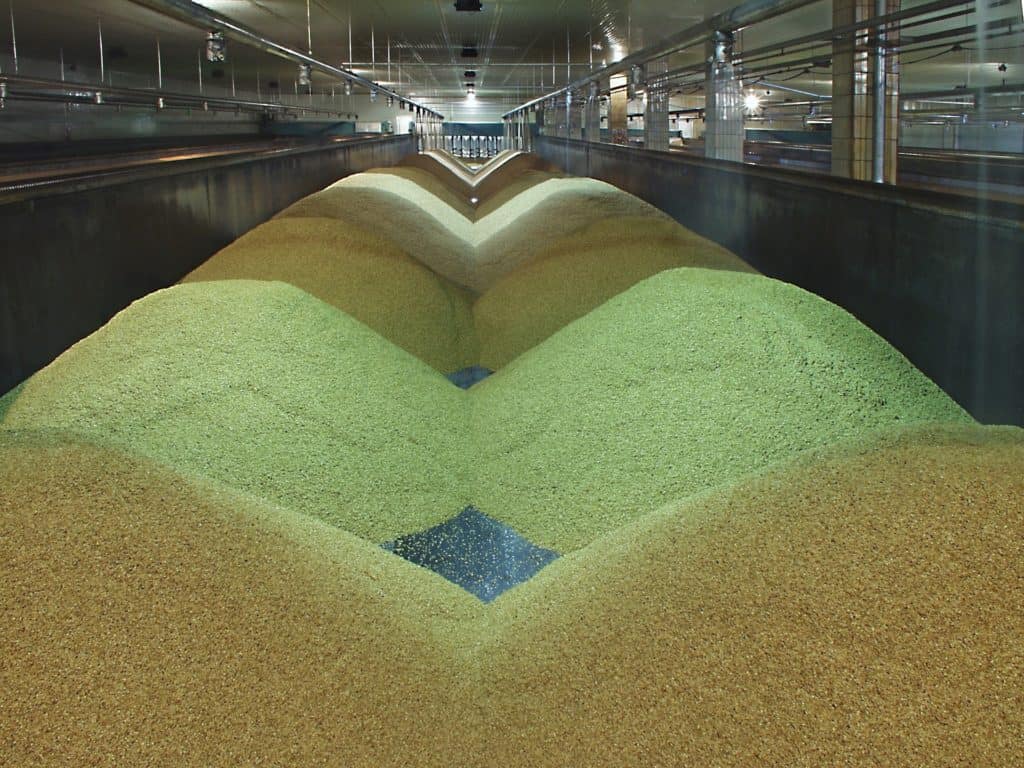
Typically, germination takes around 8 – 12 days, though this all depends on the type of barley used, the quality, and the weather. As you know, the weather in Scotland is far from predictable. The barley however, needs a lot of TLC when it is germinating and must be turned.
Following a successful germination, the barley is then placed into a kiln where it will dry.
Mashing
No, we’re not talking about the same type of mashing you use for your tatties and neeps on Burns Night, we’re instead talking about the next step in the whisky making process.
The malted barley, which is now nice and dry, is placed into a mill where it is ground to produce what is known as a ‘grist’. The grist is then mixed in a mash turn, along with plenty of hot water. It is here where the soluble starches are then converted into sugar. The entire mixture transforms, as if by magic, into a liquid known as wort. It is the liquid that’s the important stuff here.
The solids however, are not discarded, they are often used as animal feed so there is zero wastage.

Fermentation
In order to make any sort of alcoholic beverage, fermentation must take place, and with whisky drinking it’s no different.
The liquid wort is then mixed with specially selected breeds of yeast. The yeast then feed on the sugars and convert them into alcohol.
During the fermentation process, a liquid is made known as ‘wash’. The wash contains low amounts of alcohol as well as other by-products.
Distillation
Finally, perhaps the most complex step of all, is the distillation step.
With the use of specially designed pot stills, the now alcoholic liquid is heated up at extreme temperatures until it is turned into vapour. Don’t worry, all of this amazing liquid hasn’t been wasted and evaporated into nothing, it’s the vapour that’s needed to make the wee dram you enjoy sipping on every Friday night.
The vapour rises into cooling plants which transform it back into a liquid. This is as close to whisky as you will get at this stage. The whisky is distilled on two separate occasions. The first is to get rid of any matter that cannot be fermented. The second is the important step, as the liquid whisky needs to run until it is able to reach a specific standard needed to be used as whisky. Then it is collected in a receiver.
Just an FYI, the first runs and last runs of the liquid are not used in the final whisky product.
Maturating and blending
Now comes the fun part. This is where you get the difference between a good whisky, and a great whisky.
Scotch whisky is placed into special oak casks where some evaporation takes place. This can take as long as 15 years. The evaporated spirit is known as the ‘Angel’s Share’.
Once the whisky has matured, it can then be combined with additional whiskies to make special blends, or it can age and mature some more, often in different casks.
Different casks are used to produce different whiskies. Some distillers use sherry casks, some use bourbon casks, some use wine casks, some stick with oak, and some use a combination during different stages of the maturation process.
When the whisky goes into a cask, it is crystal clear and looks just like water. It takes on those stunning amber, yellow, gold, and brown hues during the maturation process, picking up its colour, and the flavours, from the casks that it is matured in.
How to Enjoy Whisky
Right, we now know what whisky is, how it’s made, and roughly where and how it originated. What we don’t yet know however, is how to enjoy whisky properly.
There’s nothing finer than a high quality whisky, yet whisky drinking, like distilling, is an art form in itself. Everything matters, from the glass you drink it from to the type of ice cubes or whisky stones that you use to chill this amazing tipple.
Before you head over to https://greatdrams.com/ and purchase your next bottle of Scotch, here are some useful tips on how to enjoy whisky.
Water or ice?
Some whisky is best enjoyed at room temperature, and some is best enjoyed chilled. If you do decide to chill your whisky however, just be aware that ice cubes will dramatically alter the flavour.
Before you add anything to your whisky, take a few gentle sips and see if you enjoy the taste. If the temperature is right, but you feel it’s a little too harsh on your palate, add a drop or two of water to your whisky and this will transform the taste entirely, especially if your whisky is a higher ABV.
When adding water, always use a quality mineral water. Never tap water. Adding tap water to a quality malt whisky would be like turning to Gordon Ramsay’s restaurant, ordering his signature beef wellington, and slopping a pot noodle on top of it.
As for ice, again, use ice cubes made from mineral water, and just be aware that ice will dilute the taste of your whisky as the ice melts. If you enjoy the taste but want to chill your whisky, consider using whisky stones instead. These stones sit in the freezer to chill, and are used just like ice cubes. They will chill your whisky, without diluting it.
How does it look?
They say that we taste with our eyes, and when you clasp eyes on a gorgeous looking glass golden amber whisky, you’ll understand exactly what that saying is all about.
Before you take that first sip of whisky, pour it into a suitable vessel (more on that later) and admire its appearance. Look at it against a white background in good lighting, and see how it looks. Is it light or dark in colour?
The colour will give you a good idea of the type of cask used to mature the whisky, as ex-bourbon casks will give lighter colours than ex-Sherry casks for example. You can also tell whether the whisky is naturally coloured. If for example, you’re sipping a 4-year old whisky that’s as dark as mud, chances are it has been coloured artificially.
Take a sniff
By now you’re probably desperate to take that first magical sip of whisky, but not so fast, we’re not done yet. Now comes the time for the all-important sniff test.
Before you taste your whisky, give it the gentlest of swirls and give it a good sniff. What can you smell? See if you can detect the same notes from the whisky as described on the bottle. If the whisky states that, on the nose you get notes of butterscotch and vanilla, take a sniff and see if you can pick these up.
For best results, don’t hold your nose too close to the glass and don’t inhale too aggressively. Also, try to keep your mouth slightly open while inhaling, as this will help awaken your sense of smell.
Choose the right drinking vessel
What you drink your whisky from makes a real difference. If you’re serious about becoming a whisky drinker and taking your whisky experience to another level, you’re going to want to invest in some whisky glasses and a whisky decanter.
Not only do these vessels allow you to truly appreciate the look of your whisky, but they also allow it to breathe and allow some of the harsh alcohol notes to evaporate.
Tasting
Okay, we won’t keep you in suspense any longer, now comes the time for you to take a taste of your delicious amber nectar.
Don’t gulp your whisky, not unless you want your throat to feel as if you’ve been gargling with molten lava. Instead, sip it, gently swirl it around your mouth and then swallow it. Try to focus on the taste explosions going off in your mouth and see which flavours you can detect.
Pay attention to the ‘mouthfeel’ of the whisky. See how it feels in your mouth. Does it feel thin and watery, or does it feel rich, sticky, or even oily? Mouthfeel is just as important as the taste itself when drinking whisky, so be sure to pay attention.
You can try adding a drop of two of water to your whisky, an ice cube, a whisky stone, or even making a cocktail with it. At the end of the day, as long as you enjoy the taste, that’s all that matters.
For more info on whisky drinking, or simply to pick up a bottle or two of your favourite wee dram, be sure to head on over to https://greatdrams.com/ and check out the huge selection of rare, limited, and award-winning whiskies they have available.



